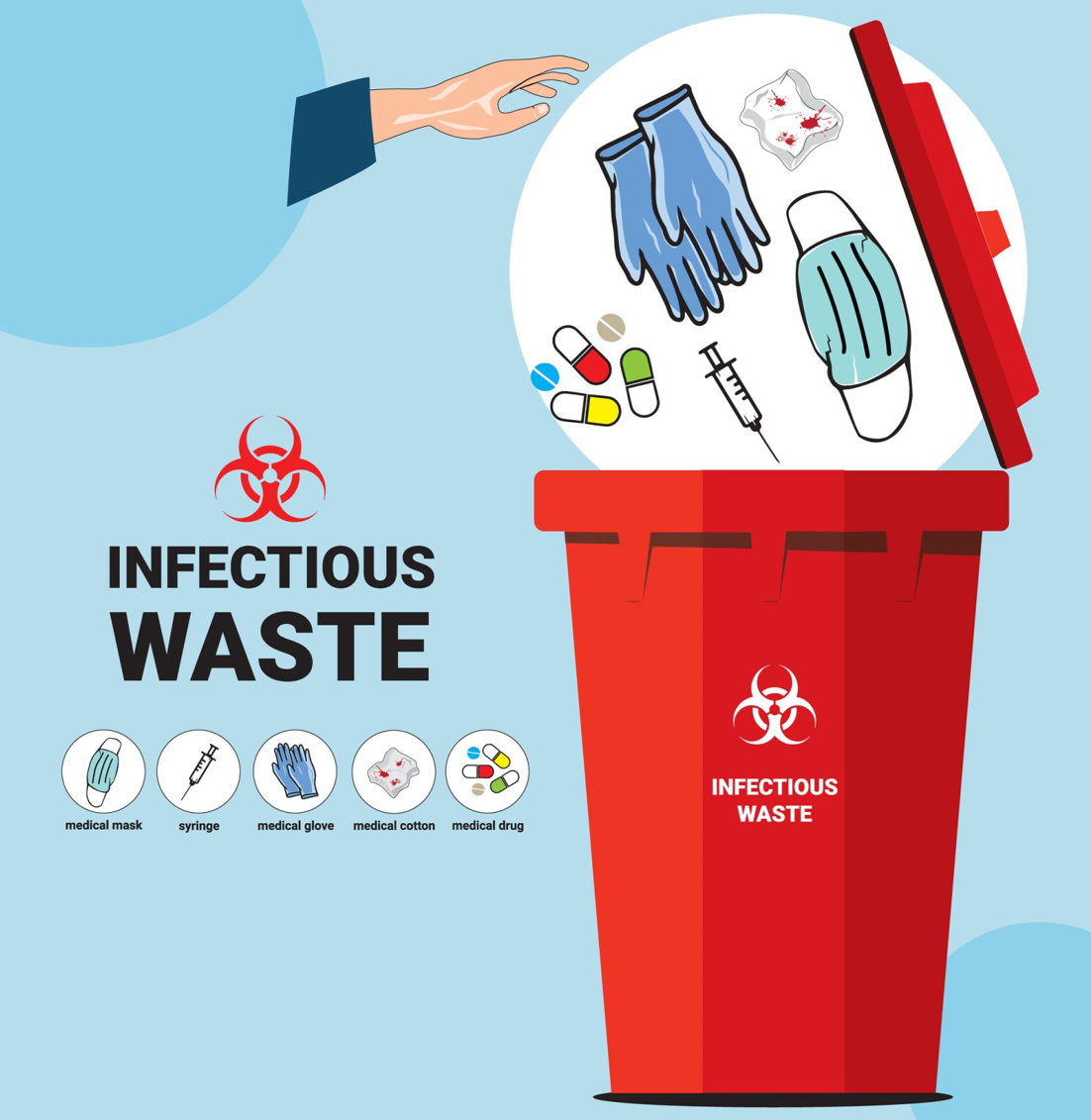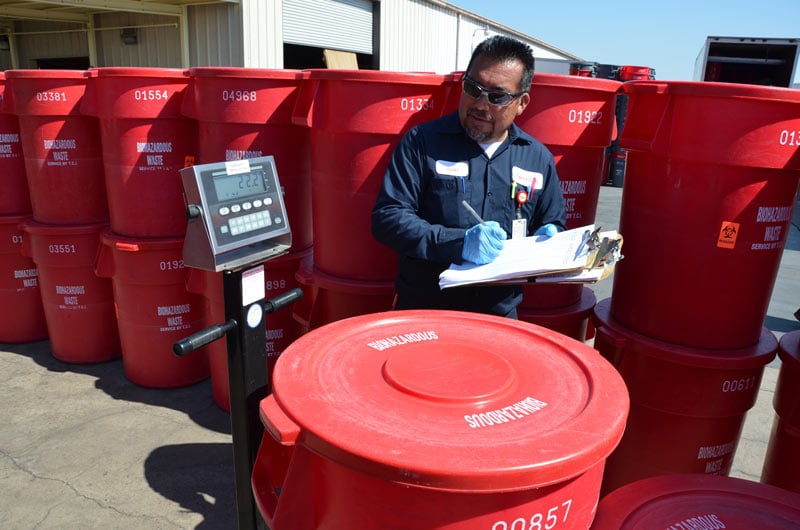Comprehensive Medical Waste Disposal Services: Making Sure a Healthy Environment
Wiki Article
Lasting Solutions for Medical Waste Disposal
The proper monitoring and disposal of clinical waste is crucial in preserving a lasting and risk-free medical care system. This introduction will discover different lasting services for medical waste disposal, including waste partition and sorting, on-site waste treatment systems, recycling and reuse programs, waste-to-energy conversion innovations, as well as cooperation and education campaigns.Waste Partition and Sorting
The procedure of waste partition and sorting is crucial in ensuring correct monitoring and disposal of clinical waste. Medical waste is classified right into different classifications based upon its potential danger to human health and the environment. Appropriate partition and sorting of waste assistance to lessen the risk of contamination and guarantee that each sort of waste is managed and dealt with properly.The initial step in waste segregation and sorting is to identify and divide various types of medical waste at the point of generation. This involves identifying the various categories of waste, such as infectious waste, sharps waste, pharmaceutical waste, and chemical waste. medical waste removal service. Each classification needs specific taking care of and disposal approaches to stop injury to health care employees, clients, and the setting

On-site Waste Therapy Equipments
Proceeding from the previous subtopic on waste partition and sorting, an effective remedy for sustainable clinical waste disposal is the implementation of on-site waste therapy systems - medical waste disposal. These systems enable medical care facilities to treat their clinical waste on-site, decreasing the requirement for transportation and disposal at off-site centers. On-site waste treatment systems typically include modern technologies such as autoclaves, microwave systems, or chemical disinfection systemsAutoclaves, generally used in health care settings, make use of high-pressure vapor to disinfect and deal with clinical waste. This procedure properly eliminates bacteria, viruses, and other potentially harmful bacteria, rendering the waste safe for additional handling and disposal. Microwave systems, on the various other hand, usage microwave radiation to heat and deal with the waste, attaining comparable results to autoclaves.
Chemical disinfection units entail the use of chemicals to decontaminate and treat clinical waste. These devices can utilize different anti-bacterials, such as chlorine-based services, to reduce the effects of microorganisms and decrease the threat of contamination. The treated waste can after that be securely gotten rid of in normal waste streams or go through additional treatment, such as shredding or incineration.
Implementing on-site waste treatment systems supplies a number of advantages. It lowers the environmental influence related to moving medical waste to off-site centers, decreasing carbon exhausts and the threat of mishaps throughout transportation. In addition, it provides health care centers with more control over the treatment procedure, making certain conformity with guidelines and decreasing the possibility for unauthorized access to sensitive clinical waste.
Recycling and Reuse Programs
To further enhance lasting clinical waste disposal methods, healthcare facilities can carry out recycling and reuse programs, building on the foundation of on-site waste therapy systems. Recycling and reuse programs use an added layer of environmental responsibility by diverting medical waste from garbage dump and searching for different usages for certain materials.One secret facet of recycling and reuse programs is the partition of waste at the source. medical waste removal. By carrying out appropriate waste segregation methods, medical care centers can separate recyclable materials, such as plastics, metals, and glass, from non-recyclable waste. This enables the efficient recycling of these materials, minimizing the need for virgin resources and minimizing the environmental influence of clinical waste disposal
In addition to recycling, healthcare facilities can check out chances for recycling specific clinical things. For example, single-use products like medical drapes and dress can be disinfected and recycled, lowering the need for brand-new materials and lessening waste generation. Multiple-use sharps containers can likewise be used, reducing the amount of plastic waste created from non reusable containers.
Implementing recycling and reuse programs needs correct infrastructure and training - WasteX Medical Waste Disposal. Health care centers need to purchase ideal reusing bins, partition systems, and sterilization equipment, along with make sure personnel are educated on correct waste administration methods
Waste-to-Energy Conversion Technologies
One potential approach to deal with clinical garbage disposal sustainably is with the utilization of waste-to-energy conversion technologies. These innovations offer an encouraging service to the expanding problem of clinical waste, which poses considerable ecological and public health and wellness threats. Waste-to-energy conversion includes transforming the organic components of clinical waste right into energy, such as warmth or electrical power, with numerous processes like gasification, pyrolysis, and incineration.Incineration is the most frequently made use of waste-to-energy innovation for clinical garbage disposal - WasteX Medical Waste Disposal. It involves the controlled combustion of waste at heats, transforming it right into ash, gases, and warmth. This heat can be used to produce vapor, which can after that be converted right into electrical power
Pyrolysis and gasification are more recent technologies that use even more eco-friendly alternatives to incineration. Pyrolysis entails warming the waste in the absence of oxygen, leading to the production of gases and char. Gasification, on the various other hand, transforms waste into a synthetic gas or "syngas" that can be made use of as a fuel for electrical energy generation or other commercial procedures.
These waste-to-energy conversion modern technologies not just reduce the volume of medical waste but also provide a source of renewable resource. Additionally, they can aid reduce greenhouse gas exhausts and reliance on nonrenewable fuel sources (WasteX Medical Waste Disposal). It is important to make certain that these modern technologies are applied with proper emissions manage actions to minimize any type of possible negative effects on air top quality and public wellness.
Cooperation and Education Initiatives
Partnership among stakeholders in the medical care sector is essential for implementing lasting options for clinical waste disposal. In order to effectively attend to the challenges associated with medical waste administration, it is necessary for healthcare centers, waste administration firms, regulators, and various other pertinent parties to collaborate.
Moreover, education initiatives play an essential function in advertising lasting techniques. Health care experts require to be conscious of the environmental influence of incorrect waste management and the significance of applying sustainable solutions. Training programs and instructional materials can aid them recognize the correct partition of waste, making use of eco-friendly alternatives, and the benefits of waste-to-energy conversion modern technologies.
Cooperation and education and learning can likewise promote the growth of regulations and guidelines for clinical waste disposal. By collaborating, stakeholders can add to the development of thorough policies that make sure risk-free handling, transportation, and treatment of clinical waste.
Final Thought
To conclude, taking on sustainable services for medical waste disposal is essential in order to minimize the adverse effects on the atmosphere and public health. Waste partition and sorting, on-site waste treatment systems, reusing and reuse programs, waste-to-energy conversion technologies, and collaboration and education campaigns are very important approaches to accomplish this objective. Carrying out these solutions calls for collaboration in between healthcare centers, waste management business, and government companies, as well as constant education and understanding campaigns.The procedure of waste segregation and sorting is essential in guaranteeing proper administration and disposal of medical waste.The first step in waste partition and sorting is to identify and separate various kinds of medical waste at the point of generation. This entails recognizing the different groups of waste, such as infectious waste, sharps waste, pharmaceutical waste, and chemical waste.Continuing from the previous subtopic on waste partition and sorting, a reliable service for sustainable clinical waste disposal is the implementation of on-site waste treatment systems. The cured waste can then be securely disposed of in normal waste streams or go through further therapy, such as shredding or incineration.
Report this wiki page